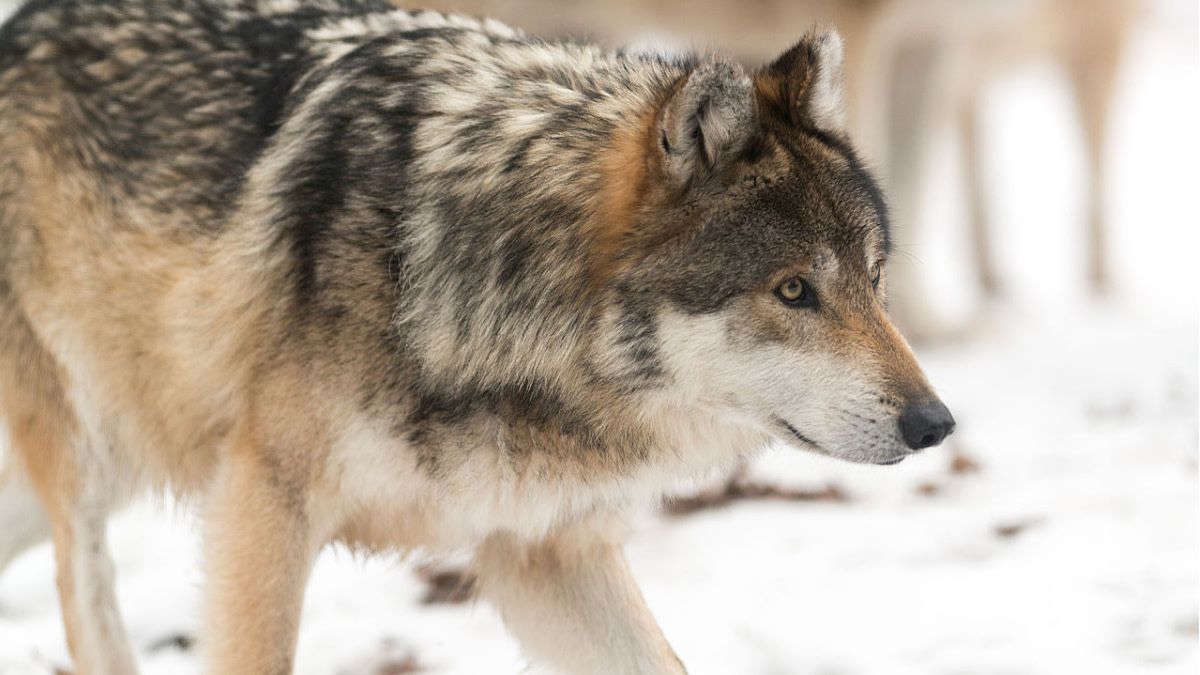
Federal officials on Wednesday proposed to remove gray wolves from the endangered species list. The decision was revealed by David Bernhardt, the acting secretary of the Department of the Interior, at the North American Wildlife and Natural Resources Conference in Denver.
The U.S. Fish and Wildlife Service noted that there has been a significant increase in wolf numbers across much of the country, citing a population jump from 1,000 to 5,000 in the Lower 48 since being listed in 1974.
“Recovery of the gray wolf under the Endangered Species Act is one of our nation’s great conservation successes,” the USFWS said in a statement, “with the wolf joining other cherished species, such as the bald eagle, that have been brought back from the brink with the help of the ESA.”
The recommendation by the USFWS will be published in the Federal Register this week, then will be open to public comment. This will likely be followed by drawn-out court battles, as it was six years ago when the Obama administration made the same attempt to remove federal protections on wolves. During the comment period in 2013, Earthjustice reported that over one million comments were submitted in protest of the delisting.
Similar to when the USFWS looked to lift protections for grizzly bears in the Greater Yellowstone Ecosystem, the agency’s stated goal is to “return management of the species to the states and tribes.” This doesn’t necessarily mean that hunting seasons will be automatically created for wolves in areas that they were previously protected, as many opposition groups have implied.
“Stripping protections from wolves now would halt further recovery from places where wolves once lived and could live again,” said Collette Adkins, carnivore conservation director for the Center for Biological Diversity, in an interview with The New York Times. “Without protections in the Adirondacks or Maine or the southern Rockies we don’t have any hope of recovery.”
The delisting has more nuanced consequences than that, though. It places responsibility on states to oversee things like population counts and the prosecution of poachers, and frees up federal funding to go towards other imperiled species.
“A federal decision to delist wolves under the federal ESA will not change the legal protections the species has [in the state],” said Jordan Traverso, spokeswoman for the California Department of Fish and Wildlife, in an email to the San Francisco Chronicle. “However, some federal funds we receive for listed species might not be available any longer, but that would be speculation on my part.”
Conservation Northwest also stressed that this move likely won’t change much for wolf recovery. The organization hails from Washington, where there are an estimated 150 wolves.
“Given the quality of Washington’s Wolf Plan and investments in collaborative wolf conservation work here, we do not expect federal delisting to have a significant impact on wolves in our state,” Chase Gunnell, Conservation Northwest spokesperson, said in a statement.
The delisting effort has gotten praise from obvious places, like organizations that represent ranchers and hunters. They’d like to see states get control similar to those around Yellowstone.
“Most of our members do not have any fundamental problem with the existence of wolves in California,” said Kirk Wilbur, director of government relations for the California Cattlemen’s Association, in an interview with the San Francisco Chronicle. “It’s just that they are not allowed to protect their cattle. All we want, and all we have sought, is for the California Department of Fish and Wildlife to manage problem wolves.”
When wolves first received the protection they were absent in California and many other states, with much of the remaining Lower 48 populations limited to northern Minnesota. In response to their dire status, agencies reintroduced wolves into central Idaho and the Wyoming portion of Yellowstone National Park in the mid-1990s. Since then, wolves have spread into neighboring states, such as Montana, Utah, Oregon, Washington and California.
By 2000, the USFWS was so satisfied with the growing wolf populations that they recommended reclassifying the species as “threatened” for most of the country. In anticipation of them eventually being delisted, states started crafting laws and plans around managing the species in 2003, a requirement of the ESA.
Wyoming was granted control of their wolves in 2017, but Montana and Idaho have now had seasons in place for a decade. Both states feel positive about their management as wolf populations have stabilized and livestock conflicts have decreased. According to the U.S. Department of Agriculture, livestock depredation by wolves in 2017 was 25 percent of what it was in 2009 when the seasons opened. Recent surveys have shown that $380,000 is generated in Montana from wolf license sales each year.
As with the delisting efforts for the Greater Yellowstone Ecosystem states, the USFWS’s current attempt to return wolves to state management in the rest of the contiguous U.S. is certain to be fraught with conflict and litigation. But it’s an important step forward in the holistic management of America’s wildlife resources.
Feature image via Wiki Commons.






